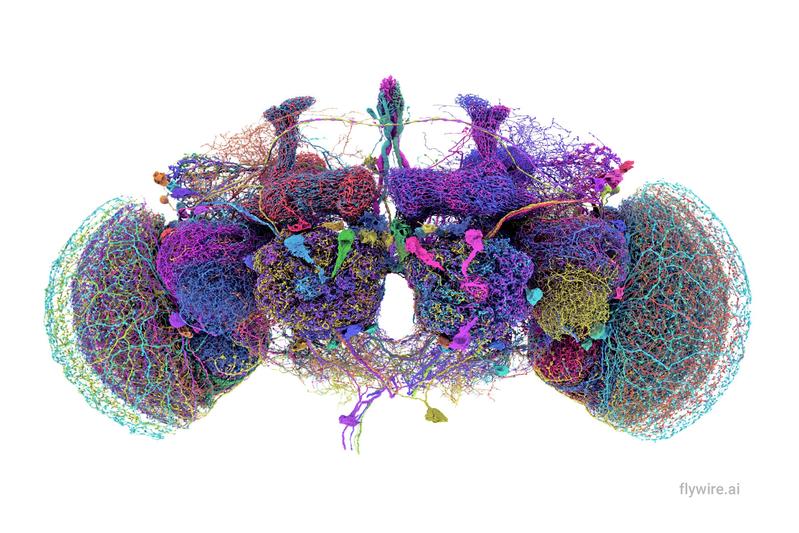Researchers reconstruct fruit fly brain structure for the first time
An international team of researchers has reconstructed the brain structure of a fruit fly (Drosophila melanogaster) for the first time. Scientists from the FlyWire consortium – including biologist Dr Katharina Eichler from Leipzig University – created a connectome, or a circuit diagram, of the insect’s brain. This is considered a milestone by the scientific community as it is the largest brain circuit diagram ever created. Accompanying studies demonstrate the usefulness of the connectome for the study of neuronal processes and give an insight into how this resource will revolutionise this field of research.
Nine papers on this subject were published for the first time in an issue of the prestigious journal Nature. Eichler was involved in six of them.
Everything we do, think or feel results from the patterns of activity in our brains, which depend on the connections between our brain cells. Many neuroscientists believe that by mapping all the neurons and connections in the brain – creating a connectome – it is possible to understand how the brain works. This is an incredibly complex task, as the human brain contains more than 80 billion neurons and 100 trillion connections. The fruit fly brain, on the other hand, contains a million times fewer neurons than the human brain. Despite this, flies can perform complex behaviours such as navigation, learning and social interactions.
In the journal Nature, researchers Sven Dorkenwald from Princeton University (US), Dr Philipp Schlegel from the University of Cambridge (UK) and their colleagues describe the first complete mapping of the adult Drosophila brain connectome. Researcher Dr Katharina Eichler from the Institute of Biology at Leipzig University was part of the international FlyWire consortium. The project was based on electron microscopy images collected in 2018, using new imaging techniques. The FlyWire team developed methods to accurately align the images, and used machine vision to automatically reconstruct individual neurons. To correct for errors, the team built a computational infrastructure that allowed researchers around the world to check the neuron reconstructions. The result of this massive effort was a complete connectome of the Drosophila brain, comprising approximately 140,000 neurons and 54.5 million synapses.
“In the accompanying papers, as part of the FlyWire team, I have already been able to use this unique resource to trace neuronal circuits, generate hypotheses about their function and create circuit models based on actual connectivity,” says Dr Katharina Eichler. In the long term, this scientific breakthrough could be an essential step towards solving one of the biggest mysteries in neuroscience: how does a brain actually work?
“The fly connectome gives us an insight into how information is processed in the brain and translated into behaviour. Some of these principles are likely to be organised in a very similar way in the human brain. In addition, this project has led to the development of many techniques and research advances that are an important step towards the mouse connectome or, perhaps in a few years’ time, the human connectome,” says Dr Katharina Eichler.
Wissenschaftlicher Ansprechpartner:
Prof. Dr. Andreas Stephan Thum
Phone: +49 341 97-36961
EMail: andreas.thum@uni-leipzig.de
Dr. Eichler Katharina
Phone: +49 341 97- 32923
EMail: katharina.eichler@uni-leipzig.de
Originalpublikation:
The papers published in Nature (Dr Katharina Eichler was involved in the first six):
https://www.nature.com/articles/s41586-024-07558-y
https://www.nature.com/articles/s41586-024-07686-5
https://www.nature.com/articles/s41586-024-07968-y
https://www.nature.com/articles/s41586-024-07854-7
https://www.nature.com/articles/s41586-024-07982-0
https://www.nature.com/articles/s41586-024-07763-9
https://www.nature.com/articles/s41586-024-07981-1
https://www.nature.com/articles/s41586-024-07953-5
https://www.nature.com/articles/s41586-024-07967-z
Weitere Informationen:
https://flywire.ai/
Die semantisch ähnlichsten Pressemitteilungen im idw


